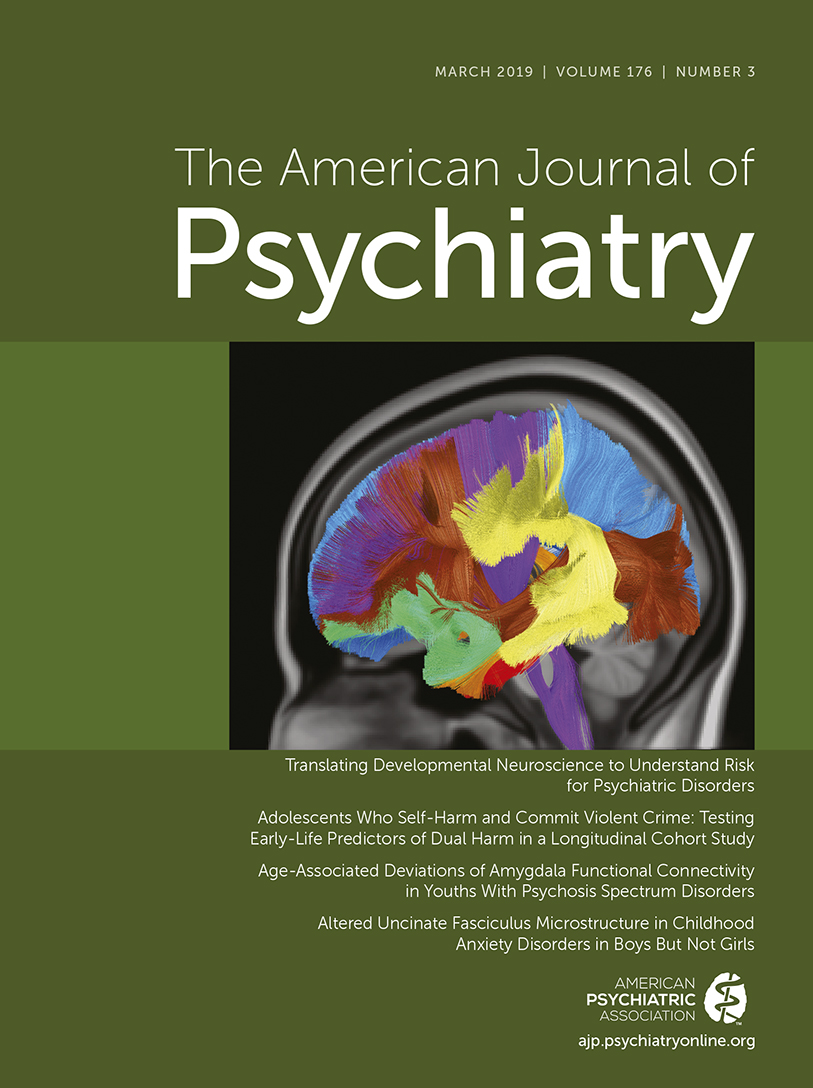Caution Against Overinterpreting Opiate Receptor Stimulation as Mediating Antidepressant Effects of Ketamine
To the Editor: The recent article by Williams et al. (1), published in the December 2018 issue of the Journal, eloquently describes the results of a pilot study designed to explore the potential involvement of the opioid system in relation to ketamine’s antidepressant properties. The authors report that naltrexone, a nonselective opioid antagonist, was capable of attenuating the antidepressant efficacy of a single dose of ketamine in a crossover study design. Although this study appropriately draws attention to the complexity that likely underlies ketamine’s mechanism of antidepressant action, we should be cautious in our interpretation of the study’s findings.
Beyond the standard caveat related to reproducibility issues associated with small sample studies, we should be careful not to overinterpret the findings of this study by concluding the results provide evidence that the antidepressant effects of ketamine are mediated through the drug’s actions on the opioid neurotransmitter system. It is not possible to draw this conclusion from this study. The data, showing naltrexone attenuates the antidepressant effect of ketamine, provides evidence that normal function of the opioid system is required to realize the full antidepressant effects of treatment. Normal functioning of the opioid system has also been shown necessary for the generation of nonspecific (placebo) effects on both pain and mood, presumably through the actions of the endogenous opioids acting within several relevant brain regions (2). Similarly, it is quite possible that normal function of the endogenous opioid system may also be necessary to permit the expression of the full antidepressant response associated with ketamine. The authors cite a few studies to suggest naltrexone does not have depressogenic effects per se, but these studies do not adequately address naltrexone’s ability to more broadly attenuate antidepressant responses in patients with major depressive disorder.
Thus, the data suggest that normal function of the endogenous opioid system is necessary for the full antidepressant effect and not necessarily that an exogenous activation of opioid receptors by ketamine is mediating the antidepressant effect. This is an important distinction to make when considering the clinical and neurobiological implications of the study’s findings. While agreeing that several reasons exist to urge caution related to the expanding use of ketamine in the treatment of mood disorders, I disagree with the authors’ conclusions that the results of this study “provide strong justification for further caution against widespread and repeated use of ketamine before further mechanistic testing has been performed” (1, p. 1211). Following this logic, we would do the same for placebo treatments. I suggest the best way to truly understand the potential risk of initiating a new substance abuse epidemic is to organize a national registry that monitors the use (and potential abuse) of the drug. I also believe that by too narrowly interpreting the results of this study mechanistically, we may miss a prime opportunity to gain more insight into ketamine’s unique mechanisms of action.
1 : Attenuation of antidepressant effects of ketamine by opioid receptor antagonism. Am J Psychiatry 2018; 175:1205–1215Link, Google Scholar
2 : Molecular mechanisms of placebo responses in humans. Mol Psychiatry 2015; 20:416–423Crossref, Medline, Google Scholar



